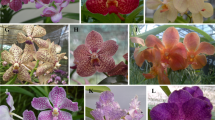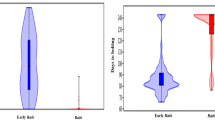Abstract
A step towards genotype-independent regeneration of cotton (Gossypium hirsutum L.) was achieved by selection for regeneration potential (RG) in commercial seed of elite cultivars. A callus induction medium (MCIM) empirically determined for the cultivar `Maxxa' paved the way for RG selection among individual genotypic variants within a cultivar. MCIM consists of a basal Murashige-Skoog medium, supplemented with a unique combination of two synthetic auxins. Hypocotyl explants of `Coker 312', `Maxxa' and `Riata' seedlings cultured on MCIM successfully produced a high quality, friable callus as defined by its color, texture, size, and organization. Based on the number of fertile plants regenerated on a per seedling basis, RG was estimated as 17.4%, 44.4% and 80% in Acala cotton cultivars `Maxxa', `Ultima', and `Riata', respectively. The high RG of the cultivar Riata, a Round-up Ready® transgenic cultivar in a Maxxa genetic background, is likely due to additional RG alleles introgressed from the transgenic parent. Genotypic differences between cultivars for RG was reflected by the need for supplemental kinetin to efficiently regenerate `Ultima' plantlets via somatic embryogenesis. RG selection pressure through two cycles of selection resulted in development of advanced highly regenerable `Max-R' lines in an elite genetic background with immediate potential as suitable germplasm for breeding and biotechnology applications. Based on the results presented here, strategies for genotype-independent transformation and regeneration of cotton are proposed that integrate selection and introgression of regeneration potential in improvement programs.
Similar content being viewed by others
References
Bowman DT, May OL & Calhoun DS (1996) Genetic base of upland cotton cultivars released between 1970 and 1990. Crop Sci. 36: 577-581
Firoozabady E & DeBoer DL (1993) Plant regeneration via somatic embryogenesis in many cultivars of cotton (Gossypium hirsutum L.). In Vitro Cell. Dev. Biol. 29P: 166-173
Gawel NJ & Robacker CD (1990) Genetic control of somatic embryogenesis in cotton petiole callus cultures. Euphytica 49: 249-254
Gould JH, Banister S, Hasegawa O, Fahima M & Smith R (1991) Regeneration of Gossypium hirsutum and G. barbadense from shoot apex tissues for transformation. Plant Cell Rep. 10: 12-16
Gould JH & Magallanes-Cedeno M (1998) Adaptation of cotton shoot apex culture to Agrobacterium-mediated transformation. Plant Mol. Biol. Rep. 16:283
Hemphill JK, Maier CG & Chapman KD (1998) Rapid in vitro plant regeneration of cotton (Gossypium hirsutum L.). Plant Cell Rep. 17: 273-278
Koonce L, Dever J, Bums T & Trolinder NL (1996) Progress towards genotype-independent transformation. Beltwide Cotton Prod. Res. Conf. 2: 1173
Kumar S, Sharma P & Pentel D (1998)A genetic approach to in vitro regeneration of non-regenerating cotton (Gossypium hir-sutum L.) cultivars. Plant Cell Rep. 18: 59-63
Luo J-H & Gould JH (1999) In vitro shoot-tip grafting improves recovery of cotton plants from culture. Plant Cell Tiss. Org. Cult. 57: 211-213
Meredith WR Jr. (2000) Continued Progress for Breeding for Yield in the USA. In: Kechagia U (ed) Proc World Cotton Research Conference II. Athens, Greece (pp 97-101)
Murashige T & Skoog F (1962) A revised medium for rapid growth and bioassays with tobacco tissue culture. Physiol. Plant. 15: 473-497
Nobre J, Keith DJ & Dunwell (2001) Morphogenesis and regeneration from stomatal guard cell complexes of cotton (Gossypium hirsutum L.). Plant Cell Rep. 20: 8-15
Rajasekaran K (1996) Regeneration of plants from cryopreserved embryogenic cell suspension and callus cultures of cotton (Gossypium hirsutum L.). Plant Cell Rep. 15: 859-864
Sakhanokho HF, Sharma GC, Zipf A, Saha S & Rajasekaran K
Author information
Authors and Affiliations
Corresponding author
Rights and permissions
About this article
Cite this article
Mishra, R., Wang, HY., Yadav, N.R. et al. Development of a highly regenerable elite Acala cotton (Gossypium hirsutum cv. Maxxa) – a step towards genotype-independent regeneration. Plant Cell, Tissue and Organ Culture 73, 21–35 (2003). https://doi.org/10.1023/A:1022666822274
Issue Date:
DOI: https://doi.org/10.1023/A:1022666822274




